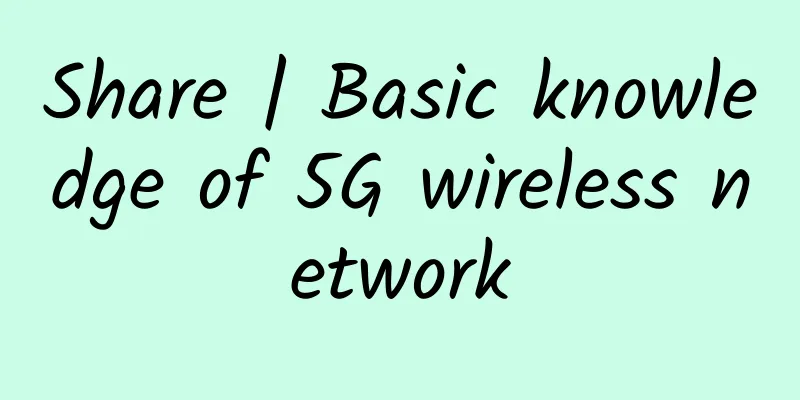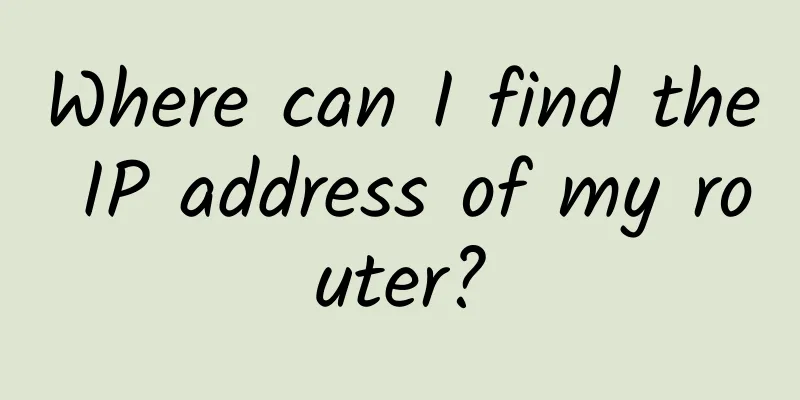Share | Basic knowledge of 5G wireless network

|
Wireless networks have improved dramatically over the past few years as consumers and businesses deploy more and more mobile devices connected to new 5G fixed and mobile networks. Commercial 5G wireless networks first launched on a large scale in 2019. Since then, mobile network operators (MNOs) have been working to expand coverage of this new high-speed, low-latency cellular standard. What is 5G?The 3rd Generation Partnership Project (3GPP) published the first 5G New Radio (5G NR) specification as part of its Release 15 in 2017. From its initial commercial launch, 5G has surpassed real-world 4G download speeds. Actual 5G speeds depend on the frequency used by the technology, such as low-band, mid-band, or high-band. High-band 5G ranges from 24 GHz to 39 GHz and uses millimeter wave (mmWave) spectrum. High-band 5G can deliver data speeds in excess of 1 Gbps, but only if the user is outdoors and up to 1,000 feet away from a mobile 5G mmWave base station. Users need to be close to a 5G base station or small cell to get adequate mobile coverage. Carriers provide mid-band spectrum — ranging from 1.7 GHz to 4.7 GHz — to much of the world, enabling download speeds of more than 100 Mbps and signal coverage for miles. The three major U.S. mobile network operators have used low-band 5G to cover large areas, providing data speeds of just over 50 Mbps. Still, low-band is faster than the 20 Mbps average download speeds offered by 4G LTE. Another important 5G technology capability is low latency. In the best case, for 4G LTE, network response time (the length of time it takes for a data packet to reach its destination) is about 70 milliseconds (ms). True 5G networks can have response times as low as 10 ms to 20 ms. However, most 5G networks operating today are not true 5G networks. Most 5G networks are non-standalone (NSA) networks, which means they connect the 5G radio access network (RAN) element to a 4G core to control routing, forwarding, and user mobility functions. NSA networks represent the majority of 5G available worldwide today. The Standalone (SA) specification using 5G Core and RAN was finalized in June 2018, but few MNOs have implemented it. Currently, T-Mobile is the only major US mobile network operator to launch SA, while China Mobile, China Telecom, and China Unicom have deployed SA in China. There are also some operators around the world that have deployed SA, but the greatest interest in SA comes from enterprises that want to deploy private 5G networks in enterprise factories and facilities. Companies can use the low latency provided by private networks for applications such as critical indoor communications and industrial robotics. Types of 5G wireless network services and how they workMobile network operators are currently rolling out two types of 5G services: fixed wireless access (FWA) and mobile 5G. Here’s how both types of 5G wireless network services work. Fixed 5G wireless broadbandFixed wireless broadband is a group of services designed to deliver last-mile internet connectivity to businesses or residences using radio signals, rather than wired connections directly to the premises. To deliver fixed wireless broadband, operators deploy 5G radios in base stations or small cells, such as streetlights and utility poles. 5G radios transmit signals to wireless modems installed in buildings and homes, replacing the need for fiber, cable or other wired connections. FWA services are based on mid-band or millimeter wave 5G. FWA services typically deploy repeaters to extend the range of fixed services from small cells or base stations to users' homes. In December 2017, 3GPP completed the 5G NR standards required for fixed broadband wireless. Verizon and T-Mobile are the main representatives of FWA in the United States, along with some smaller operators and startups. 5G Mobile ServicesMobile network operators initially deployed NSA mobile 5G services in 2019, but major mobile network operators in North America, Europe, and Asia have only recently begun to achieve nationwide mobile 5G coverage. Data speeds vary widely, depending on the type of frequencies supported by mobile 5G. 5G Wireless Networks in the EnterpriseWith the rise of commercial private 5G networks, enterprises are beginning to see the full promise of 5G technology for the enterprise. IDC recently reported that private 5G will enter limited commercial availability in 2022. “To date, most private 5G projects remain in the trial or pre-commercial deployment phase,” IDC said. “While private 5G is still in its infancy from a market size perspective, the appetite and interest in what it can offer is very real.” Companies planning to roll out private 5G networks will need RAN hardware — small cells or base stations — 5G core software and equipment that works on the chosen frequencies. Access to radio spectrum is one of the most difficult aspects of private network deployment. In the United States, companies can use Citizens Broadband Radio Service (CBRS) mid-band spectrum for 5G private networks. In parts of Asia and Europe, governments allocate spectrum for private networks. Many web-scale IT companies, such as Amazon and Cisco, are setting up divisions dedicated to deploying private networks. Mobile and cable operators are also looking to get in on the action. For example, Comcast spent $495 million to purchase 830 CBRS priority access licenses, which can be assigned to private networks across the country. Verizon has also reached a global agreement for private networks. The operator joined the field in April 2021 after signing a deal to provide private 5G network connectivity to the Port of Southampton in the UK. Service providers are driving 5G development5G is now available in much of Asia, Europe, and North America, as well as in some countries in Africa. In December 2021, internet performance metrics analytics company Ookla reported that the United States had the highest 5G availability at 49.2%, followed by the Netherlands at 45.1%, and South Korea at 43.8%. Ookla added that Seoul, South Korea, had the highest median 5G download speed at 530.83 Mbps, followed by Oslo, Norway, at 513.08 Mbps. In the United States, current deployments place a heavy emphasis on using mid-band spectrum. AT&T said its C-band will cover 70 to 75 million people by the end of 2022. T-Mobile said in April 2021 that it expects its 2.5 GHz spectrum to cover 250 million people in the United States by the end of 2022. Verizon, meanwhile, announced that it expects its C-band spectrum to cover 175 million people by the end of 2022. This is in addition to the high-band and low-band 5G deployments already underway by major US mobile network operators. This article was originally written by Jean DerGurahian and expanded by Dan Jones to reflect developments in 5G technology and deployment. |
<<: No wonder 4G is faster than 5G now. The secrets of 4G you don’t know
>>: 5G RedCap: New Cellular IoT Technology Optimization
Recommend
AWS launches 5G service, officially enters the mobile network market
Amazon Web Services (AWS) has launched the AWS Pr...
Zhao Rong wishes you a happy new year! Hongtu Exhibition!
The tiger is gone and the rabbit is here, everyth...
Analysis of the global manufacturing IoT market from 2017 to 2024
According to relevant data, the global manufactur...
After 5G technology, there may not be 6G base stations! Why do you say that?
When the 4G technology standards were announced, ...
SD-WAN: A killer way to improve network flexibility and efficiency
Wide area networks are generally used to connect ...
How can you explain the communication protocol in such a simple way?
This article is reprinted from the WeChat public ...
The three major operators will cancel the unlimited data packages in disguise from September 1st. Netizens shouted: I am not willing to accept it
Recently, the Ministry of Industry and Informatio...
South Korean government’s request for 5G fee reduction was rejected: How difficult is 5G construction?
Increasing speed and reducing fees is Premier Li&...
Hacker tools can directly crack iPhone 12, which is the last thing Apple wants to see
[[348473]] This is definitely not good news for A...
5G news is coming, and the national trial commercial use will start in mid-to-late October!
[[426617]] After much anticipation, the long-awai...
How to resolve the conflict between 5G intermediate frequency and satellite C band?
At present, various regions continue to accelerat...
NexusBytes: US VPS monthly payment starts from 2 USD, Singapore/Japan VPS monthly payment starts from 3.2 USD, large hard disk VPS monthly payment starts from 4 USD
The tribe once shared information about NexusByte...
Come and watch! The Maker Beijing 2020 Kunpeng Application Innovation Special Competition Seminar is about to start!
In order to help more ICT industry practitioners ...
Linkerd 2.10 (Step by Step) — Customizing Linkerd Configuration with Kustomize
The Linkerd 2.10 Chinese manual is being continuo...









